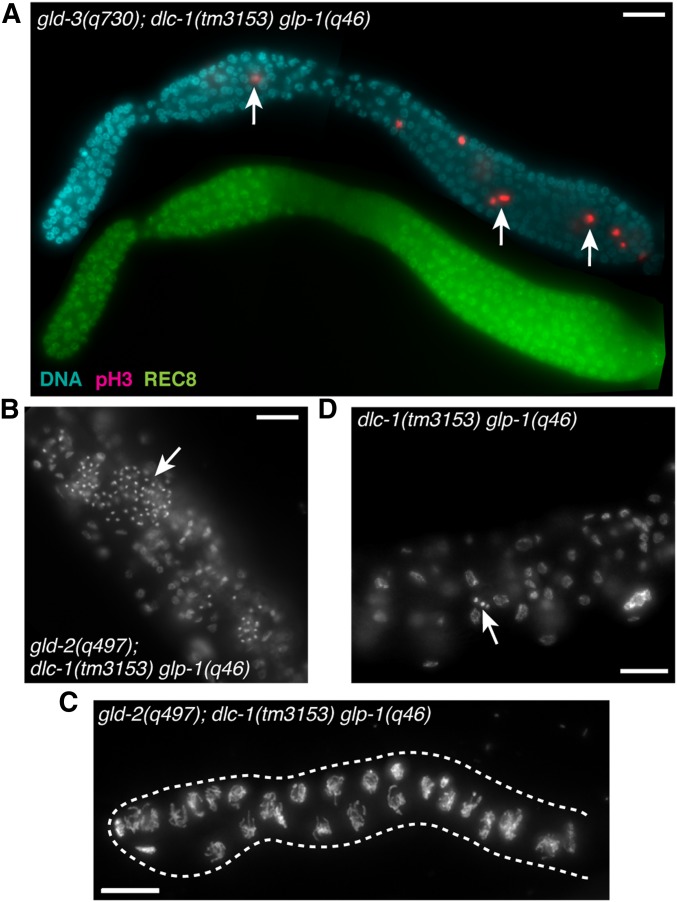Figure 4.
dlc-1(-) synthetic overproliferation phenotype is not dependent on glp-1 activity. (A) Fluorescence micrograph of dissected gonad from triple mutant animal gld-3(q730); dlc-1(tm3153) unc-32(e189) glp-1(q46) immunostained for mitotically dividing cells (pink), stem and progenitor cells (green), and DNA (blue). White arrows indicate aberrant cell proliferation. (B) Fluorescence micrograph of gld-2(q497); dlc-1(tm3153) unc-32(e189) glp-1(q46) whole worm stained with DAPI show the presence of many sperm (white arrows). (C) The ability of gld-2(q497); dlc-1(tm3153) unc-32(e189) glp-1(q46) mutant germ cells to differentiate into sperm is gradually lost after several generations, as seen in a dissected gonad stained with DAPI. (D) dlc-1(tm3153) unc-32(e189) glp-1(q46) whole worm stained with DAPI. White arrow indicates sperm. Bar, 10 μm.

